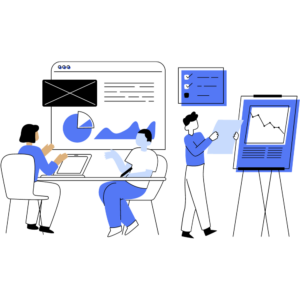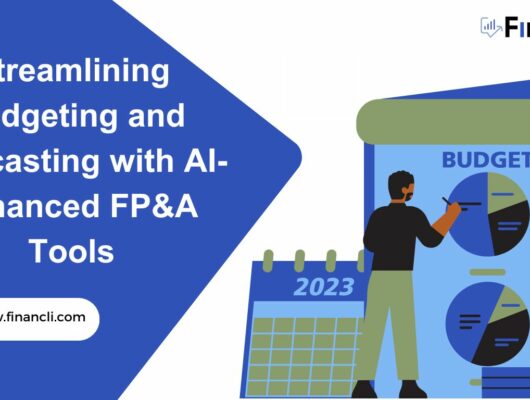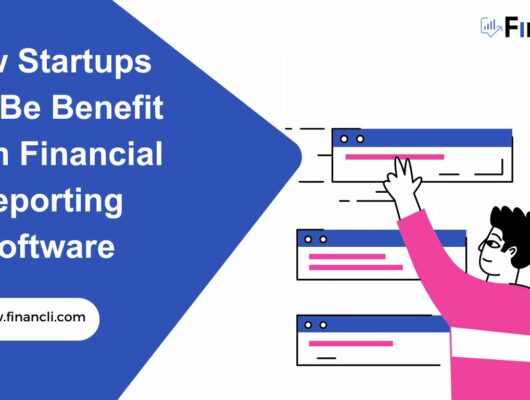What Is FP&A Software, and How It Works
Introduction:
In the realm of corporate finance, Financial Planning and Analysis (FP&A) software is a critical tool for steering businesses toward informed decisions and strategic growth. This article will delve into what FP&A software is and how it works, exploring data integration for real-time insights and improved financial management. We’ll also discuss selection criteria and best practices, guiding you through the essentials of leveraging FP&A software for optimal business performance. But before we dig deeper, let’s first understand FP&A itself and its purpose.
FP&A Definition
Financial Planning and analysis (FP&A) is a crucial aspect of corporate finance that involves planning, budgeting, forecasting, and analyzing an organization’s financial statements to make informed business decisions. It aims to support the company’s financial health and guide strategic business initiatives.
What is the Purpose of FP&A?

The primary purpose of FP&A, or Financial Planning & Analysis, is multifaceted, deeply impacting an organization’s strategic and operational dimensions. It serves as the backbone for informed business decision-making, guiding companies through financial management and business strategy complexities. Here’s a more detailed look at its core purposes:
1. Understanding Current Financial Performance:
FP&A professionals analyze current financial data; a company’s financial health can be assessed by analyzing financial statements, including income statements, balance sheets, and cash flow statements, which are important documents that summarize a company’s financial performance. These statements are used to assess a company’s profitability, liquidity, and overall financial health. This involves looking at key performance indicators (KPIs), financial ratios, and other metrics to understand profitability, liquidity, and efficiency. By doing so, finance teams can identify trends, pinpoint strengths and weaknesses, and assess the business’s overall financial performance.
2. Predicting Future Performance:
One of the most critical aspects of FP&A is forecasting. This involves using historical data, market trends, and economic indicators to predict future financial outcomes. Financial models are created to simulate various scenarios and their potential impacts on the business. This forward-looking approach helps organizations anticipate changes, prepare for different outcomes, and make proactive decisions.
3. Assisting in Strategic Planning and Decision-Making:
FP&A directly supports strategic planning by providing a financial lens through which to view long-term goals and initiatives. It ensures that financial objectives are aligned with the overall business strategy, leading to efficient and effective resource allocation. FP&A enables leaders to choose the path that best supports sustainable growth and competitive advantage by analyzing the financial implications of different strategic choices.
4. Providing Valuable Insights into Business Operations:
Beyond numbers, FP&A delves into what drives them. It involves analyzing operational data alongside financial data to understand the underlying factors affecting performance. This might include analyzing sales channels, product profitability, customer behavior, and market dynamics. These insights allow businesses to optimize operations, improve profitability, and adapt to changing market conditions.
5. Facilitating Informed Decision-Making:
Ultimately, the purpose of FP&A is to culminate financial and operational insights into actionable strategies. By providing a comprehensive view of the financial implications of different decisions, FP&A empowers leaders to make informed choices. Whether it’s entering new markets, adjusting pricing strategies, managing costs, or investing in new technologies, FP&A provides the analytical foundation for these critical decisions.
6. Driving Business Growth:
Through continuous monitoring and analysis, FP&A helps identify growth opportunities and areas for improvement. It supports risk management by identifying potential financial risks and devising strategies to mitigate them. By ensuring that the business is financially sound and strategically focused, FP&A plays a crucial role in driving sustainable business growth.
What is Financial Planning and Analysis Software (FP&A)?
FP&A software is a tool or suite of tools that aids businesses in their financial planning and analysis. It automates repetitive tasks, provides real-time data analysis, and supports advanced analytics for forecasting solutions, budgeting processes, and financial reporting. These software solutions often include features like scenario planning, financial consolidation, and customizable dashboards.
How FP&A Software Works
FP&A software is a sophisticated tool designed to streamline and enhance the financial planning and analysis process. It works through a series of interconnected functionalities and technologies, transforming how businesses plan, analyze, and report their financial operations. Here’s a more detailed breakdown of how it works:
1. Data Integration:
At its core, FP&A software integrates data from various sources within the organization. This includes financial data from accounting systems, operational data from sales and marketing, and external data such as market trends and economic indicators. By consolidating this data into a single platform, the software ensures that all financial planning and analysis are based on comprehensive and up-to-date information.
2. Data Standardization and Management:
The software standardizes data to ensure consistency and accuracy once data is integrated. This involves cleaning, categorizing, and structuring data so that it’s ready for analysis. Effective data management is crucial for providing reliable insights and supporting sound financial decisions.
3. Advanced Analytics and Forecasting:
FP&A software analyzes historical and current data to forecast future financial scenarios. It can simulate various conditions and outcomes, helping businesses understand potential risks and opportunities. This predictive capability is a cornerstone of effective financial planning, allowing companies to anticipate changes and prepare accordingly.
4. Real-Time Reporting and Visualization:
FP&A software provides dynamic reporting and interactive dashboards that present complex financial data in an understandable and visually appealing format. Users can customize reports to focus on specific KPIs, financial metrics, or operational data. Real-time capabilities mean that as soon as data is updated or new information comes in, reports and dashboards reflect these changes, offering immediate insights.
5. Scenario and What-If Analysis:
One of the powerful features of FP&A software is its ability to perform scenario and what-if analyses. Users can create and compare different financial scenarios to understand the potential impact of various decisions or market conditions. This helps in strategic planning, risk assessment, and decision-making, as businesses can prepare for multiple eventualities.
6. Collaboration and Workflow Management:
Modern FP&A software often includes tools for collaboration and workflow management. This means finance teams can work together more effectively, with clear workflows, shared dashboards, and communication tools integrated into the platform. It enhances the efficiency and accuracy of the financial planning process, as team members can contribute, review, and approve parts of the plan seamlessly.
7. Continuous and Dynamic Planning:
Traditional financial planning was often a static, once-a-year activity. FP&A software supports continuous and dynamic planning, allowing businesses to update their financial plans regularly as new data comes in or as conditions change. This agility is crucial in today’s fast-paced business environment, where companies need to be able to adapt quickly to remain competitive.
8. Leveraging AI and Machine Learning:
Advanced FP&A software incorporates artificial intelligence and machine learning to enhance its capabilities further. AI can provide predictive insights, automate routine tasks, and even offer recommendations for optimizing financial performance. Machine learning algorithms improve over time, learning from new data and user interactions to provide increasingly accurate and insightful forecasts and analyses.
In summary, FP&A software revolutionizes financial planning and analysis by integrating and managing data, providing advanced analytics, enabling real-time insights, and facilitating collaboration and continuous planning. It transforms raw financial data into strategic insights, helping businesses plan more effectively, respond quickly to changes, and drive better financial performance. As technology continues to evolve, the capabilities and impact of FP&A software are only set to increase, making it an essential tool for modern finance departments.
How Do You Choose the Right FP&A Tools?

Choosing the right FP&A tools involves considering your company size, specific finance functions, and the complexity of your financial processes. Look for a comprehensive suite that offers:
– Adaptive Planning: Adjusts to various financial scenarios.
– Real-Time Data: Provides up-to-date financial information.
– Scalability: Grows with your business needs.
– Integration: Seamlessly connects with existing business systems.
– User-Friendly Interface: Ensures ease of use for all team members.
Financial Planning and Analysis Best Practices (FP&A)
Best practices in FP&A include:
– Strategic Planning: Aligning financial plans with business strategy.
– Regular Review: Continuously updating financial models and forecasts.
– Collaboration: Involving all relevant departments in the planning process.
– Leveraging Technology: Utilizing the latest FP&A software for efficiency and accuracy.
– Scenario Analysis: Preparing for various business conditions.
Frequently Asked Questions:
Why Use FP&A Software?
-FP&A software provides finance teams with the tools necessary for accurate forecasting, budgeting, and analysis. It helps in making informed decisions, reducing errors, and saving time on financial tasks.
Where Does FP&A Start?
-FP&A starts with understanding the business’s current financial state and goals. It involves gathering and analyzing historical data, setting benchmarks, and identifying key performance indicators.
What is the Difference Between FP&A and Finance?
-While finance refers to managing the money and investments of a business, FP&A is a subset focused specifically on planning and analyzing financial activities to guide business strategy and decisions.
What is the Difference Between FP&A and Accounting?
-Accounting focuses on recording and reporting past financial transactions. In contrast, FP&A uses this data to make forward-looking predictions and plans for the business.
Conclusion
FP&A is an integral part of financial management, providing strategic oversight and detailed planning to drive business growth. By utilizing the right FP&A software and adhering to best practices, businesses can achieve a more accurate and efficient financial planning process, leading to better business decisions and enhanced financial performance. As technology evolves, incorporating elements like machine learning and artificial intelligence into FP&A will continue to offer deeper insights and more sophisticated financial models, making it an indispensable tool for modern finance teams.






